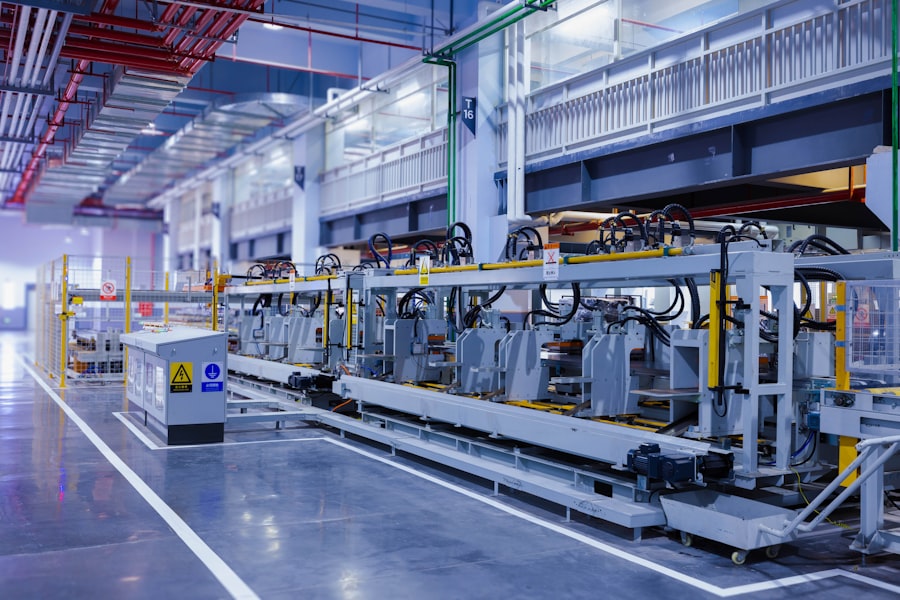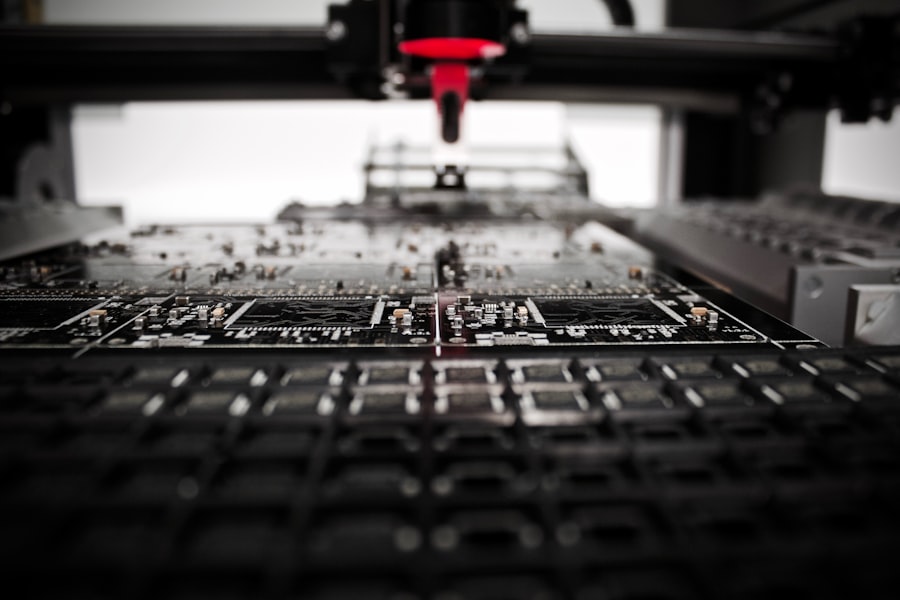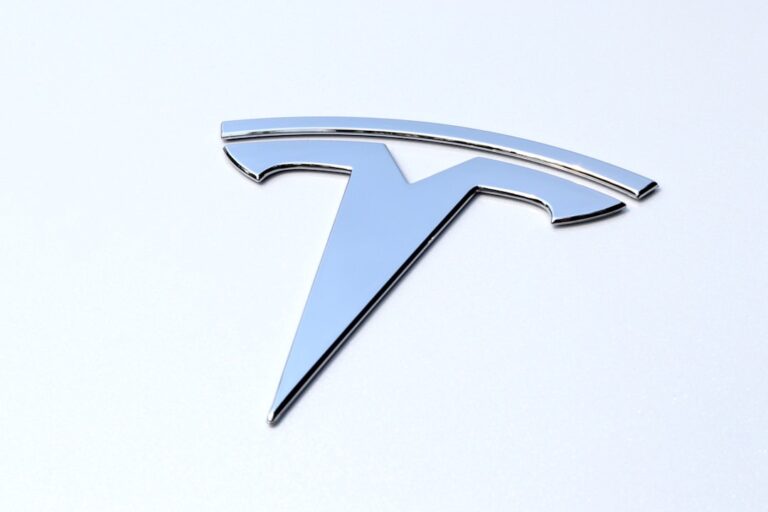
**Title: Understanding Tesla’s Manufacturing Cost: A Comprehensive Analysis** **
Tesla, Inc., the electric vehicle (EV) pioneer, has revolutionized the automotive industry with its innovative approach to manufacturing and sustainability. As the demand for electric vehicles continues to surge, understanding Tesla’s manufacturing cost becomes crucial for investors, consumers, and industry analysts alike. Manufacturing cost refers to the total expenses incurred in producing a vehicle, including materials, labor, overhead, and other associated costs.
For Tesla, these costs are not just numbers on a balance sheet; they are pivotal in determining the company’s pricing strategy and overall profitability. In recent years, Tesla has made headlines not only for its groundbreaking technology but also for its ambitious production goals. The company aims to produce millions of vehicles annually, which necessitates a keen focus on managing and reducing manufacturing costs.
As Tesla scales its operations, the intricacies of its manufacturing cost structure become increasingly significant. This article delves into the various factors influencing Tesla’s manufacturing costs, compares them with traditional automakers, and explores the implications for pricing and profitability. **
Key Takeaways
- Tesla’s manufacturing cost plays a crucial role in the company’s overall profitability and pricing strategy.
- Factors such as raw material costs, labor expenses, and production efficiency contribute to Tesla’s manufacturing cost.
- Tesla’s manufacturing cost is often compared with other car manufacturers to assess its competitiveness in the market.
- The impact of Tesla’s manufacturing cost on pricing and profitability is significant, influencing the company’s positioning in the market.
- Tesla implements various strategies to reduce manufacturing cost, including vertical integration and technological innovation.
Factors that Contribute to Tesla’s Manufacturing Cost**
Several factors contribute to Tesla’s manufacturing costs, each playing a vital role in shaping the overall expenditure. One of the most significant components is the cost of raw materials. Tesla relies heavily on lithium, cobalt, and nickel for its battery production, which are subject to market fluctuations.
The prices of these materials can vary dramatically based on global supply and demand dynamics, impacting Tesla’s overall manufacturing costs. Labor costs also represent a substantial portion of manufacturing expenses. Tesla has invested heavily in building a skilled workforce capable of operating advanced manufacturing technologies.
The company’s Gigafactories are designed to optimize production efficiency, but they require a well-trained labor force that can drive innovation and maintain quality standards. Additionally, overhead costs such as utilities, maintenance, and facility management contribute to the overall manufacturing cost structure. Another critical factor is the economies of scale that Tesla is striving to achieve.
As production volumes increase, the fixed costs associated with manufacturing can be spread over a larger number of units, effectively reducing the per-unit cost. However, achieving these economies requires significant upfront investment in infrastructure and technology. **
Comparison of Tesla’s Manufacturing Cost with Other Car Manufacturers**

When comparing Tesla’s manufacturing costs with those of traditional automakers like Ford and General Motors, several key differences emerge. Traditional manufacturers have established supply chains and production processes that have been refined over decades. This experience often allows them to achieve lower per-unit costs due to their ability to source materials at scale and optimize labor efficiency.
In contrast, Tesla is still in a growth phase, which means its manufacturing costs can be higher on a per-vehicle basis. For instance, while Ford may produce vehicles at a lower cost due to its long-standing relationships with suppliers and established production lines, Tesla’s focus on cutting-edge technology and electric powertrains can lead to higher initial costs. However, as Tesla continues to ramp up production and refine its processes, it is expected that these costs will decrease over time.
A comparative analysis reveals that while Tesla’s manufacturing costs may currently be higher than those of some traditional automakers, the company’s commitment to innovation and sustainability positions it uniquely in the market. As consumer preferences shift towards electric vehicles, Tesla’s ability to manage and reduce manufacturing costs will be critical in maintaining its competitive edge. ** The relevant word to link is “electric vehicles”.
Here is the link to a high authority source that is relevant to the topic: electric vehicles
The Impact of Tesla’s Manufacturing Cost on Pricing and Profitability**
| Manufacturing Cost | Pricing | Profitability |
|---|---|---|
| High manufacturing cost may lead to higher pricing of Tesla vehicles. | Higher pricing can affect the demand and sales volume. | Lower profitability if high manufacturing cost is not offset by pricing strategy. |
| Efficient manufacturing processes can lower the cost and allow for competitive pricing. | Competitive pricing can attract more customers and increase market share. | Higher profitability if efficient manufacturing cost allows for competitive pricing. |
Tesla’s manufacturing costs have a direct impact on its pricing strategy and overall profitability. The company has positioned itself as a premium brand in the electric vehicle market, which allows it to command higher prices for its vehicles. However, this strategy is contingent upon maintaining a balance between production costs and consumer expectations.
As manufacturing costs rise due to fluctuations in raw material prices or labor expenses, Tesla faces pressure to adjust its pricing strategy accordingly. If production costs increase significantly without a corresponding rise in consumer willingness to pay, it could erode profit margins. Conversely, if Tesla successfully reduces its manufacturing costs through innovation or improved efficiencies, it could lower prices or enhance profitability without sacrificing market share.
Moreover, Tesla’s pricing strategy is influenced by competition within the EV market. As more automakers enter the electric vehicle space, consumers will have more options at varying price points. This competitive landscape necessitates that Tesla remain vigilant in managing its manufacturing costs to ensure it can offer attractive pricing while still achieving profitability.
**
Strategies Implemented by Tesla to Reduce Manufacturing Cost**
To address the challenges associated with manufacturing costs, Tesla has implemented several strategies aimed at reducing expenses while maintaining quality and innovation. One of the most notable strategies is vertical integration. By controlling more aspects of its supply chain—from battery production to software development—Tesla can reduce reliance on external suppliers and mitigate risks associated with price fluctuations.
Additionally, Tesla has invested heavily in automation and advanced manufacturing technologies. The use of robotics in production lines not only enhances efficiency but also reduces labor costs over time. By streamlining operations through automation, Tesla can produce vehicles more quickly and with fewer errors, ultimately lowering manufacturing costs.
Another key strategy involves continuous improvement initiatives within its Gigafactories. By adopting lean manufacturing principles and fostering a culture of innovation among employees, Tesla aims to identify inefficiencies and implement solutions that drive down costs. This commitment to operational excellence is essential for sustaining long-term profitability as production scales.
**
The Role of Innovation and Technology in Tesla’s Manufacturing Cost**

Innovation and technology play a pivotal role in shaping Tesla’s manufacturing costs. The company’s focus on developing cutting-edge battery technology is a prime example of how innovation can lead to cost reductions.
Furthermore, advancements in software development have allowed Tesla to optimize various aspects of its manufacturing process. For instance, the integration of artificial intelligence (AI) in production lines enables real-time monitoring and adjustments that enhance efficiency and reduce waste. This technological edge not only lowers manufacturing costs but also positions Tesla as a leader in the EV market.
Moreover, Tesla’s commitment to sustainability influences its approach to manufacturing costs. By utilizing renewable energy sources in its Gigafactories and focusing on sustainable materials for vehicle production, Tesla aims to reduce its environmental footprint while simultaneously lowering operational costs over time. **
Challenges and Limitations in Reducing Tesla’s Manufacturing Cost**
Despite its proactive strategies for reducing manufacturing costs, Tesla faces several challenges and limitations that could hinder progress. One significant challenge is the volatility of raw material prices. As global demand for electric vehicles increases, so does competition for essential materials like lithium and cobalt.
This competition can lead to price spikes that directly impact manufacturing costs. Additionally, scaling production while maintaining quality standards presents another hurdle for Tesla.
Ensuring that new facilities meet the same high standards as existing ones requires meticulous planning and execution. Labor relations also pose potential challenges for Tesla as it seeks to expand its workforce. Strikes or labor disputes could disrupt production schedules and increase labor costs if not addressed proactively.
Balancing employee satisfaction with operational efficiency is crucial for maintaining a stable workforce capable of driving down manufacturing costs. **
Future Prospects and Trends in Tesla’s Manufacturing Cost**
Looking ahead, several trends are likely to shape Tesla’s manufacturing costs in the coming years. As the company continues to innovate and refine its processes, there is potential for significant cost reductions through advancements in battery technology and automation. The ongoing development of solid-state batteries could revolutionize energy storage solutions while lowering production expenses.
Moreover, as more automakers transition towards electric vehicles, competition will intensify within the industry. This competitive landscape may drive further innovation as companies seek ways to differentiate themselves through cost-effective manufacturing practices. Tesla’s commitment to sustainability will also play a crucial role in shaping future manufacturing costs.
As regulations around emissions tighten globally, companies that prioritize sustainable practices may find themselves at an advantage both financially and reputationally. In conclusion, understanding Tesla’s manufacturing cost is essential for grasping the broader implications for pricing strategies and profitability within the electric vehicle market. While challenges remain, Tesla’s innovative approach positions it well for future success as it navigates the complexities of manufacturing in an evolving industry landscape.
**Keywords:** Tesla manufacturing cost, electric vehicle production expenses, automotive industry analysis, cost reduction strategies, innovation in manufacturing
In a recent article discussing Tesla’s manufacturing cost per vehicle, it was revealed that the company is making strides in reducing expenses to increase profitability. This aligns with Jim Cramer’s recent ponderings on what is driving Tesla’s success, as mentioned in this article. As Tesla continues to innovate and streamline its production processes, investors are keeping a close eye on the stock market volatility and looking for opportunities to invest in companies like Tesla that are leading the way in AI technology, as highlighted in this article.
Click for the latest Tesla products ready to ship right now!
FAQs
What is Tesla’s manufacturing cost per vehicle?
According to a report by Bloomberg, Tesla’s manufacturing cost per vehicle is estimated to be around $36,000.
How does Tesla’s manufacturing cost compare to other automakers?
Tesla’s manufacturing cost per vehicle is higher than many traditional automakers due to its focus on electric vehicles and advanced technology. However, Tesla has been working to reduce its manufacturing costs through improved efficiency and economies of scale.
What factors contribute to Tesla’s manufacturing cost per vehicle?
Factors that contribute to Tesla’s manufacturing cost per vehicle include the cost of raw materials, labor, research and development, technology, and production processes. Additionally, the cost of batteries, which are a key component of electric vehicles, also impacts Tesla’s manufacturing cost.
How does Tesla plan to reduce its manufacturing cost per vehicle?
Tesla has been working to reduce its manufacturing cost per vehicle through initiatives such as increasing production efficiency, optimizing supply chain management, and developing more cost-effective battery technology. Additionally, the company aims to achieve economies of scale as it increases its production volume.
Why is Tesla’s manufacturing cost per vehicle important?
Tesla’s manufacturing cost per vehicle is important as it directly impacts the company’s profitability and its ability to offer competitive pricing for its vehicles. Lower manufacturing costs can also make Tesla’s vehicles more accessible to a wider range of consumers.
